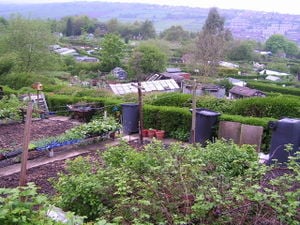Aberdeenshire community action

The aim of this page is to recognise, celebrate and encourage the self-empowerment of community agency networks (CANs) and community groups' activism for climate, environment and many other sustainability topics across Aberdeenshire.
 ‘The fear has properly set in’: how it feels to watch my home town disappear into the sea, theguardian.com (May 21, 2024)
‘The fear has properly set in’: how it feels to watch my home town disappear into the sea, theguardian.com (May 21, 2024)  River Dee Trust’s Million Trees Campaign, a project to save threatened salmon in the River Dee, wins one of the country’s most prestigious nature restoration awards, riverdee.org.uk (Nov 23, 2023) — More than 460,000 trees have already been planted.
River Dee Trust’s Million Trees Campaign, a project to save threatened salmon in the River Dee, wins one of the country’s most prestigious nature restoration awards, riverdee.org.uk (Nov 23, 2023) — More than 460,000 trees have already been planted.
Rivers[edit | edit source]
- River Dee Trust, community-based charitable company, set up in 1998. added 12:50, 4 December 2023 (UTC)
The Dee is important for nature conservation and the area has many designated sites. The upper catchment down to Inverey is within the Mar Lodge Estate, which is owned by the National Trust for Scotland and has been classified as a national nature reserve since May 2017.
The Cairngorms National Park which was established in 2003 covers the whole of the catchment of the Dee, including the tributaries, down to as far as Dinnet. As well as being included as part of the Cairngorms National Park, the Deeside area along with the mountains surrounding Lochnagar as far south as the head of Glen Doll is classified as the Deeside and Lochnagar National Scenic Area. It is one of 40 areas in Scotland designated as a scenic area. The Deeside and Lochnagar National Scenic Area covers 40,000 ha, extending from the Geldie down to Ballater.
The entire length of the Dee is defined as a Special Area of Conservation (SAC) due to its importance to salmon, otters and freshwater pearl mussels. Other SACs within the Deeside area include Glen Tanar, the Muir of Dinnet, Ballochbuie, and the Morrone Birkwood. The southern side of Deeside is classified as a Special Protection Area, due to the area's importance to golden eagles.
Much of the semi-natural Caledonian pine forest in Scotland is within the Dee catchment. The area contains nationally rare examples of pine woods, birch woods and heather moors with associated wildlife. On the valley floor there are deciduous alder and mixed broadleaved woods as well as meadow grasslands.
The Dee is a popular salmon river and has a succession of varied pools which are intersected by sharp rapids. In 1995 it was estimated that salmon fishing on the river contributed between £5 and £6 million a year to the Grampian Region economy. In 2020 it was estimated that salmon fishing contributed £15 million a year to the local economy and the River Dee reporting 10% of Scottish salmon catches. The River Dee operates a catch and release practise and all salmon which are caught must be released back to the river. W
About Aberdeenshire[edit | edit source]
Aberdeenshire (Scots: Aiberdeenshire; Scottish Gaelic: Siorrachd Obar Dheathain) is one of the 32 council areas of Scotland.
It takes its name from the historic county of Aberdeenshire, which had substantially different boundaries. The Aberdeenshire Council area includes all of the areas of the historic counties of Aberdeenshire and Kincardineshire except the area making up Aberdeen City Council area, as well as part of Banffshire. The historic county boundaries are still officially used for a few purposes, namely land registration and lieutenancy.
Aberdeenshire Council is headquartered at Woodhill House in Aberdeen, making it the only Scottish council whose headquarters are located outside its jurisdiction. Aberdeen itself forms a different council area (Aberdeen City). Aberdeenshire borders onto Angus and Perth and Kinross to the south, Highland and Moray to the west and Aberdeen City to the east.
Traditionally, it has depended economically on the primary sector (agriculture, fishing, and forestry) and related processing industries. Over the last 40 years, the development of the oil and gas industry and associated service sector has broadened Aberdeenshire's economic base, and contributed to a rapid population growth of some 50% since 1975. Its land represents 8% of Scotland's overall territory. It covers an area of 6,313 square kilometres (2,437 sq mi).
See also[edit | edit source]
- Topic overview: Community resources, Community river action UK
- UK and Scotland context: Community resources UK, Scotland community resources

